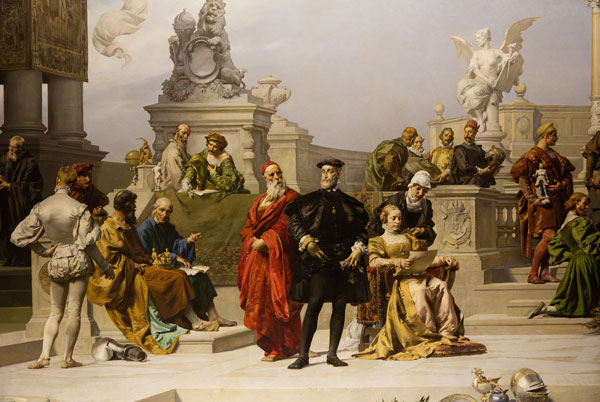National Museum of Korea ends Habsburg exhibition after six months of display

[Photo of Habsburg collections, photo credit: public domain]
The National Museum of Korea’s Habsburg exhibition, titled <Six Centuries of Beauty in the Habsburg Empire> is set to wrap up after an impressive six-month run.
The exhibition is a collaborative effort between the National Museum of Korea, the Austrian Embassy in Korea, and the Kunsthistorisches Museum Vienna, which currently houses an extensive collection of Habsburg era paintings.
The purpose of the exhibit is to “foster understanding of the House of Habsburg, which played a central role in European history, while also recognizing the Habsburgs as the center of European politics, economics, and art for more than 600 years”, according to the National Museum of Korea.
The exhibit displays 96 paintings and artifacts that the House of Habsburg collected during its six-hundred year reign, with some works dating all the way back to the fifteenth century.
Throughout its long dynasty, the House of Habsburg demonstrated a profound commitment to the arts, investing heavily in its development and preservation.
Many Habsburgs were artists themselves. Rudolf II of the Holy Roman empire was a painter, while Archduke Charles II of Inner Austria possessed impressive woodworking skills.
The exhibition is divided into five different exhibits, each representing a different era of the House of Habsburg.
The first exhibit focused on the collections of Rudolph II of Germany, who primarily collected handicraft objects from across Europe. One of the objects on display is the cruciform sundial, which was forged in 1619.
Next, the exhibition shifts its focus to the Holy Roman Emperor, Ferdinand II, and his collections. Most notably among them, the Seychelles nut ewer, a vase in the form of a Seychelles nut, is on display.
Seychelles nuts were a mystery to Medieval Europeans, as the islands that they originated from were yet to be discovered until 1768.
The ewer, created in the 1550s, possessed a sense of mystique and curiosity to the Europeans, and multiple copies of the ewer were bought by Ferdinand II in 1611. Today, only six remain across museums around the world, and two of them are on display in this exhibition.
Exhibits three and four are perhaps the highlight of the exhibition, with recognized paintings such as <Marie Antoinette in Court Dress> and <Mercury and Jupiter in the House of Philemon and Baucis> on display.
The final exhibit contains artifacts collected by Franz Joseph I of Austria, who is often regarded as the final emperor of the House of Habsburg.
Here, for the first time in 130 years, a pair of armor and pairsuits from the Joseon Dynasty, presented to Habsburg Emperor Franz Joseph I in 1892 by King Gojong to commemorate the establishment of the diplomatic relations between the two empires, was put on display.
The exhibition was originally planned to conclude on March 1st.However, due to outstanding public support, the exhibition was extended to March 15th in order to “let more people experience the exhibition”, according to the National Museum of Korea.
Currently all online tickets are sold out, however visitors can also purchase a ticket from 9:50 at the National Museum of Korea, located in Yongsan-gu, Seoul.

- Hoonsung Lee / Grade 10
- Cornerstone Collegiate Academy Seoul

![THE HERALD STUDENT REPORTERS [US]](/assets/images/logo_student_us.png)
![THE HERALD STUDENT REPORTERS [Canada]](/assets/images/logo_student_ca.png)
